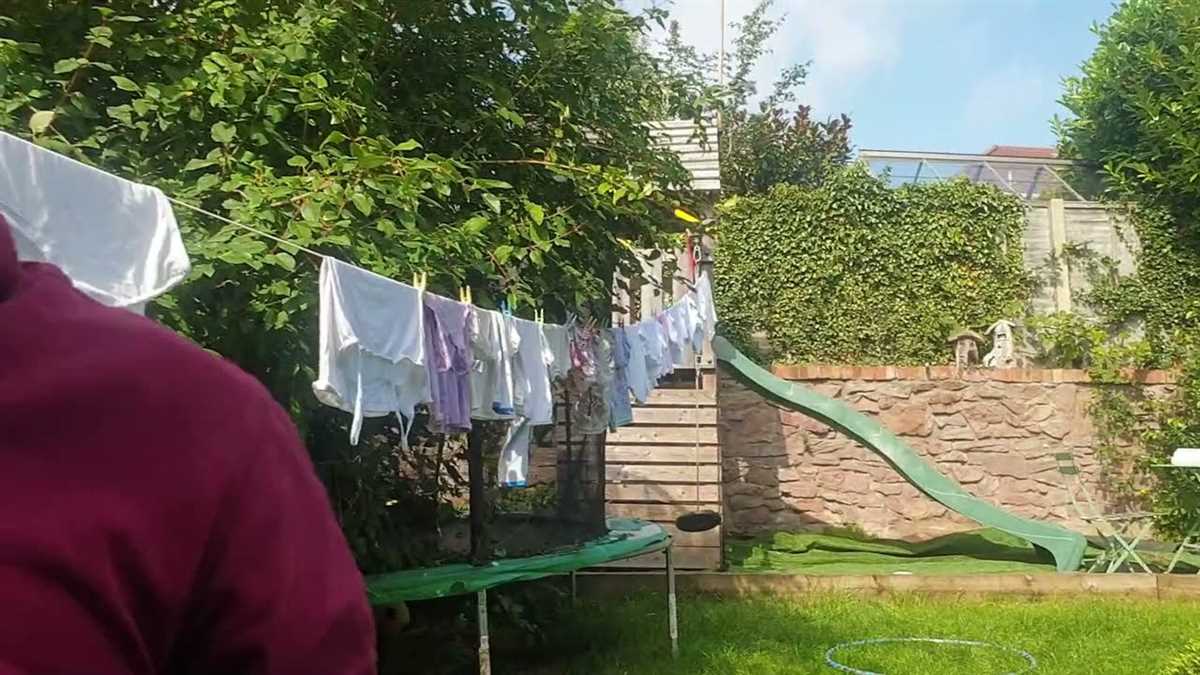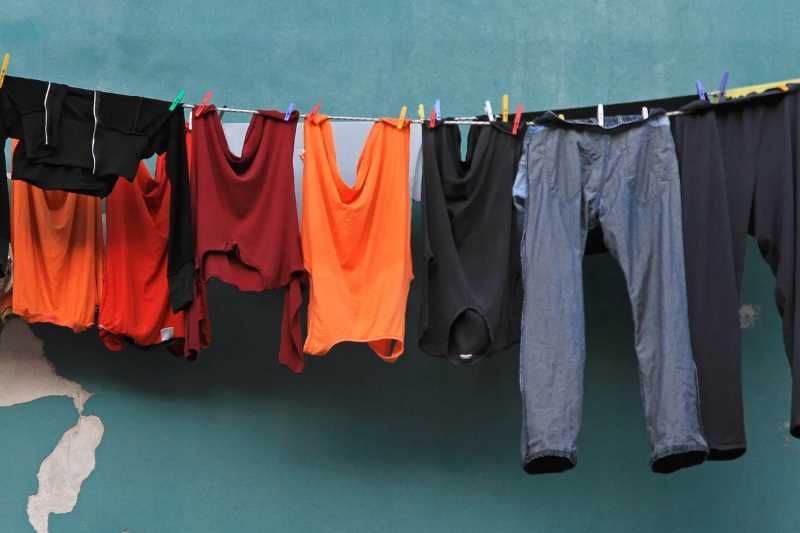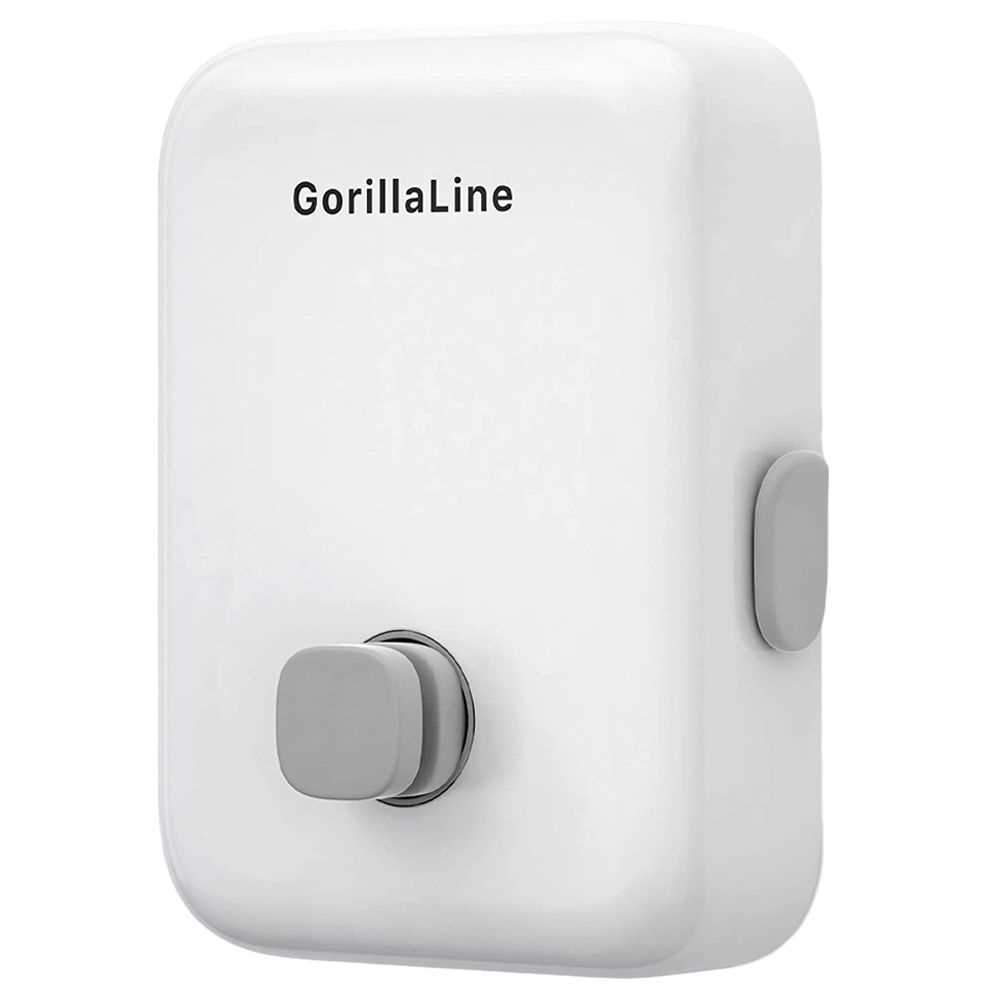




Having a retractable washing line is a convenient and space-saving solution for drying your laundry. However, over time, these lines may start to sag due to the weight of wet clothes and prolonged exposure to weather conditions. This can be frustrating and may lead to damage to your clothes or the washing line itself. Fortunately, there are several easy solutions to prevent sagging and keep your retractable washing line in top condition.
1. Install Proper Support
Ensuring that your retractable washing line has adequate support is crucial in preventing sagging. Consider installing additional support structures, such as sturdy poles or wall brackets, at regular intervals along the line. These supports will help distribute the weight of the clothes evenly and reduce strain on the retractable mechanism.
Pro tip: For added stability, use concrete anchors to secure the support structures firmly to the ground or wall.
2. Avoid Overloading
One of the main causes of sagging in a retractable washing line is overloading it with too many clothes. While it may be tempting to hang as many items as possible, this can put excessive pressure on the line and lead to sagging. Be mindful of the weight capacity of your retractable washing line and avoid exceeding it to maintain its optimal function.
Pro tip: If you have a large amount of laundry to hang, consider using multiple retractable washing lines or alternative drying methods to evenly distribute the weight.
3. Regularly Adjust Tension
Periodically checking and adjusting the tension of your retractable washing line can help prevent sagging in the long run. Over time, the line may stretch or become loose, leading to increased sagging. Refer to the manufacturer’s instructions on how to adjust the tension properly. This simple maintenance step will ensure that your retractable washing line remains taut and reliable.
Pro tip: Regularly inspect the line for any signs of wear or damage, such as fraying or rusting, and replace it if necessary.
By following these easy solutions, you can prevent sagging in your retractable washing line and enjoy hassle-free drying of your laundry for years to come.
Why You Should Prevent Sagging in a Retractable Washing Line
Sagging in a retractable washing line can cause a variety of issues that can have a negative impact on your laundry routine and the lifespan of your washing line. While it may not seem like a significant problem at first, preventing sagging is essential for several reasons.
1. Protection of Clothes

When a retractable washing line sags, it can cause clothes to come into contact with the ground or surrounding objects. This can lead to dirt, stains, or damage to your clothes, defeating the purpose of washing them in the first place.
By preventing sagging in the washing line, you can ensure that your clothes are suspended properly and kept away from potential hazards. This will help them dry efficiently and remain in good condition.
2. Proper Drying
A sagging washing line can affect the drying process. When the line is not taut, clothes may bunch up or overlap, preventing proper air circulation and slowing down the drying time.
By maintaining the tension in your retractable washing line, you can ensure that your clothes are evenly spaced and have the best chance of drying quickly and thoroughly. This is especially important for larger items such as bedding or towels that require ample airflow to dry properly.
3. Longevity of the Washing Line
A washing line that sags constantly is subjected to additional stress and strain. This can weaken the line over time and lead to premature wear and tear, reducing its overall lifespan.
By preventing sagging and maintaining proper tension, you can extend the life of your retractable washing line. Regularly checking and adjusting the line as needed will help ensure that it remains strong and durable, providing many years of service.
4. Safety
A sagging washing line can pose safety risks, especially if it is located in a high-traffic area or near children’s play areas. Low-hanging lines can be tripped over or pose a strangulation hazard.
By keeping your washing line properly tensioned and sag-free, you can minimize the risk of accidents and promote a safe environment for your family and visitors.
5. Better Aesthetic Appeal
A sagging washing line can create an unsightly appearance in your outdoor space. It can make your laundry area look disorganized and unkempt. By preventing sagging, you can maintain a neat and tidy appearance while maximizing the functionality of your outdoor space.
Overall, preventing sagging in a retractable washing line is crucial for protecting your clothes, ensuring proper drying, prolonging the washing line’s lifespan, ensuring safety, and maintaining an attractive outdoor area. By following simple maintenance techniques and addressing any signs of sagging promptly, you can enjoy a reliable and efficient washing line for years to come.
Importance of Maintaining a Taut Washing Line
A taut washing line is essential for efficient and effective clothes drying. When the washing line becomes saggy or loose, it can cause a range of issues that can affect the drying process and overall functionality of the line. Maintaining a taut washing line is important for several reasons:
-
Proper Drying: A taut washing line enables clothes to hang freely, allowing air to circulate around them. This promotes faster drying as the air can reach all parts of the fabric, including hard-to-reach areas. Clothes that are hung on a sagging line may not dry evenly or may take a longer time to dry.
Hot PickHeavy Duty Rotary Washing Line 50mUltimate stability with robust designThis 50m Rotary Washing Line offers ample drying space and includes a robust steel frame with weather-resistant coating, perfect for all outdoor laundry. Comes complete with pegs and protective cover for convenience. -
Preventing Damage: When a washing line sags, clothes may touch the ground or other objects, leading to potential damage. Contact with the ground can transfer dirt or moisture to the clothes, defeating the purpose of washing them. Additionally, dragging clothes along the ground can cause snags or tears in the fabric.
-
Maximizing Space: A taut washing line ensures that you can make the most of the available drying space. When the line is sagging, it limits the amount of usable space, reducing the number of clothes you can hang. This can be especially problematic if you have a large load of laundry or limited drying space.
-
Preventing Wrinkles: Hanging clothes on a taut line helps to prevent wrinkles and creases from forming. When the line sags, clothes may fold or bunch up, leading to unsightly wrinkles that may require ironing or rewashing.
-
Enhancing Safety: A taut washing line is safer to use as it reduces the risk of clothes falling off or getting tangled. Sagging lines may cause clothes to slip off, especially during windy conditions. This can result in clothes getting dirty or damaged, or the need to redo the drying process.
Overall, maintaining a taut washing line ensures efficient drying, prevents damage to clothes, maximizes drying space, prevents wrinkles, and enhances safety. Regularly inspect and adjust your washing line to ensure it remains taut and functional.
Troubles Caused by a Sagging Washing Line
When a retractable washing line sags, it can lead to various troubles that can affect the functionality and efficiency of the clothesline. Here are some of the common problems that may arise:
- Reduced Hanging Capacity: A sagging washing line means less available space for hanging clothes. This can be frustrating when you have a large load of laundry to dry and limited space to work with. Clothes may end up crammed together, leading to longer drying times and increased wrinkles.
- Decreased Stability: In addition to reduced capacity, a sagging line can also compromise the stability of the entire clothesline system. The sagging section may put extra strain on the retractable mechanism, leading to potential damage and decreased durability.
- Poor Aesthetics: A sagging line can make the overall appearance of the washing line unattractive. It can give the impression of a neglected or old clothesline, which can potentially diminish the overall appeal of your outdoor space.
- Inconvenience: Trying to hang clothes on a sagging line can be cumbersome. The line may sag too low, requiring you to bend down or reach higher to hang the clothes. This inconvenience can make the task of hanging laundry a tiresome chore.
- Increased Risk of Damage: When a washing line sags, it creates additional stress on the line and the fixings holding it in place. Over time, this stress can cause damage to the line or the mounting points, potentially leading to a complete failure of the clothesline system.
To avoid these troubles, addressing a sagging washing line should be a priority. Thankfully, there are several easy solutions available to prevent or correct sagging, ranging from simple adjustments to more extensive repairs or replacements.
Effective Solutions for Preventing Sagging
A retractable washing line is a convenient and space-saving solution for drying clothes outdoors. However, over time, the line can begin to sag under the weight of wet clothes or due to prolonged exposure to sunlight. To prevent sagging and maintain the effectiveness of your retractable washing line, here are some effective solutions:
1. Proper Installation
Ensure that your retractable washing line is installed correctly and securely. Follow the manufacturer’s instructions and use suitable fixing points to ensure stability. This will help to prevent sagging caused by the line being stretched too tight or the fixings becoming loose over time.
2. Use a Tensioning System
Consider using a tensioning system or a line tightening device to keep the retractable washing line taut. These systems often feature a mechanism that can be adjusted to increase or decrease the tension in the line, helping to prevent sagging.
3. Avoid Overloading

Do not overload the retractable washing line by hanging too many heavy or wet clothes on it at once. Distribute the weight evenly across the line and hang lighter items towards the ends to reduce the strain on the line and prevent sagging.
4. Regular Maintenance
Inspect your retractable washing line regularly for any signs of wear or damage. Replace any worn or damaged parts promptly to maintain the line’s strength and prevent sagging. Lubricate moving parts according to the manufacturer’s instructions to ensure smooth operation.
5. Proper Line Tension Adjustment
Periodically adjust the tension of the retractable washing line to ensure it remains taut. Over time, the line may stretch or loosen due to weather conditions or repeated use. Check the tension regularly and use any adjustment mechanisms provided by the manufacturer to maintain optimal line tension and prevent sagging.
6. Shade or Protective Cover
If your retractable washing line is exposed to direct sunlight for prolonged periods, consider installing a shade or protective cover. This will help to shield the line from the harmful effects of UV radiation and prevent premature sagging caused by sun damage.
7. Choose a High-Quality Product

When purchasing a retractable washing line, opt for a high-quality product from a reputable manufacturer. Quality lines are often made from durable materials that can withstand the weight of wet clothes and are less prone to sagging over time.
By following these effective solutions, you can prevent sagging in your retractable washing line and ensure its longevity and functionality for drying your clothes effectively.
Regular Maintenance Tips to Keep Your Washing Line in Shape
Proper maintenance is key to preventing sagging in a retractable washing line. By following these regular maintenance tips, you can keep your washing line in shape and ensure it lasts for years to come.
1. Clean the Line Regularly
Dirt, dust, and grime can accumulate on the washing line over time, causing it to sag. To prevent this, make it a habit to clean the line regularly. Use a mild detergent and warm water to remove any dirt or stains. Rinse thoroughly and allow the line to dry completely before retracting it.
2. Inspect for Damage
Regularly inspect your washing line for any signs of damage, such as frayed or loose wires, broken clips, or rust spots. If you notice any issues, repair or replace the damaged parts immediately to prevent further damage and ensure the line remains taut.
3. Lubricate Moving Parts
To ensure smooth and easy operation, lubricate the moving parts of your retractable washing line. Apply a small amount of silicone spray or lubricating oil to the hinges, springs, and any other areas that may require lubrication. This will help prevent friction and ensure the line retracts properly without any sagging.
4. Avoid Excess Weight
One of the main causes of sagging in a washing line is placing too much weight on it. Avoid overloading the line with heavy items, as this can cause it to stretch and sag over time. If you have large or heavy items to hang, consider using a separate clothesline or drying rack for them.
5. Retract the Line When not in Use
When you’re finished with your laundry, always retract the washing line. Leaving it extended for long periods can put unnecessary strain on the line, leading to sagging over time. By retracting the line, you can keep it taut and prevent any sagging or stretching.
6. Check the Tension
Regularly check the tension of your retractable washing line to ensure it remains tight. If you notice any sagging or slack in the line, adjust the tension using the provided tensioning mechanism. This will help keep the line taut and prevent sagging.
7. Store the Line Properly
During periods of non-use, make sure to store your retractable washing line properly. Clean and dry the line before retracting it fully and storing it in a dry and sheltered area. This will help protect it from the elements and prevent any sagging or damage.
8. Avoid Harsh Weather Conditions
Harsh weather conditions, such as strong winds or heavy rain, can put additional strain on your washing line and cause it to sag. If possible, avoid using the line during extreme weather conditions. If you must use it, try to anchor it securely and remove any excess weight to prevent sagging.
By following these regular maintenance tips, you can keep your retractable washing line in shape and prevent any sagging. Remember to clean it regularly, inspect for damage, lubricate the moving parts, avoid excess weight, retract when not in use, check the tension, store properly, and avoid harsh weather conditions. With proper maintenance, your washing line will remain taut and functional for years to come.
FAQ
1. How can I prevent my retractable washing line from sagging?
One way to prevent sagging in a retractable washing line is to make sure that it is installed properly. The line should be stretched tightly when it is installed to prevent any sagging. Additionally, you can use a clothespin or a clothesline tightener to keep the line taut.
2. What should I do if my retractable washing line is already sagging?
If your retractable washing line is already sagging, there are a few things you can try. First, check the installation to make sure that it is secure. If the line is loose, you may need to reinstall it or tighten it. You can also try using a clothespin or clothesline tightener to pull the line tighter. Additionally, if the sagging is due to heavy clothes, you can try reducing the amount of weight on the line by hanging fewer items at a time.
3. Can I use a retractable washing line for heavy items like blankets or towels?
While retractable washing lines are designed to hold clothes, they may not be suitable for heavy items like blankets or towels. These items can cause the line to sag and may put too much strain on the mechanism. It’s best to check the manufacturer’s recommendations for weight limits and consider using a traditional clothesline or drying rack for heavier items.
4. Will a retractable washing line sag over time?
It is possible for a retractable washing line to sag over time, especially if it is not installed properly or if heavy items are frequently hung on it. However, regular maintenance and proper use can help prevent sagging. It’s also a good idea to periodically check the line and adjust it as needed to keep it taut.
5. Are there any other solutions for preventing sagging in a retractable washing line?
Yes, there are a few other solutions for preventing sagging in a retractable washing line. Some people recommend using a bungee cord or a turnbuckle to keep the line tight. Others suggest installing a support post or adding additional anchor points to distribute the weight more evenly. Experimenting with different solutions can help you find what works best for your specific situation.
What causes a washing line to sag?
A washing line can sag due to a variety of factors, including excessive weight of the laundry, prolonged exposure to sunlight and weather conditions, and wear and tear of the line itself.














